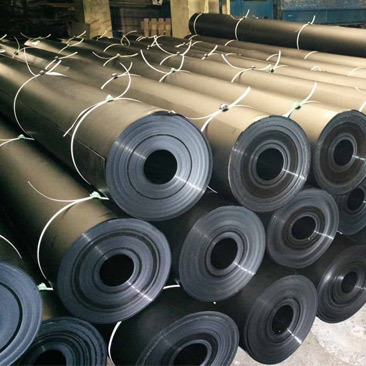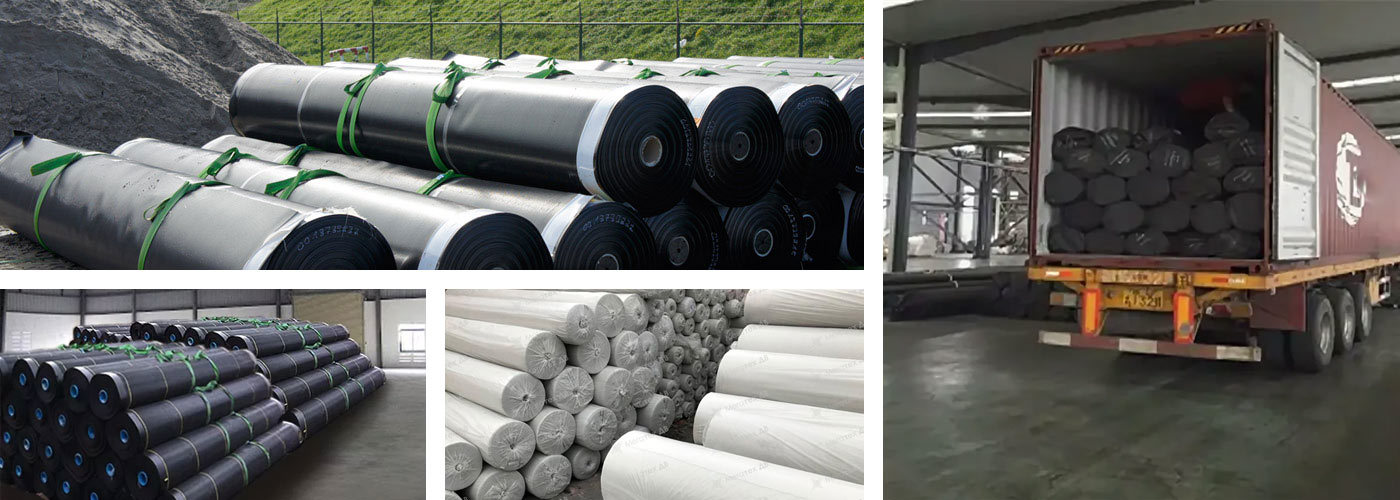Top Reasons to Choose Geomembrane Material for Your Next Project
Release time:
2025-10-12
Top Reasons to Choose Geomembrane Material for Your Next Project Introduction to Geomembrane Materials Geomembranes are essential components in modern construction and environmental engineering. These synthetic membranes are designed to control fluid movement in various applications, including waste containment, water reservoirs, and environmental protection projects. By understanding the top reas
Top Reasons to Choose Geomembrane Material for Your Next Project
Introduction to Geomembrane Materials
Geomembranes are essential components in modern construction and environmental engineering. These synthetic membranes are designed to control fluid movement in various applications, including waste containment, water reservoirs, and environmental protection projects. By understanding the top reasons to select geomembrane materials, project managers and construction professionals can make informed decisions that enhance project efficiency, reduce costs, and ensure compliance with environmental regulations.
What Are Geomembranes?
Geomembranes are impermeable membranes made from various synthetic materials, including high-density polyethylene (HDPE), low-density polyethylene (LDPE), and polyvinyl chloride (PVC). These materials are designed to prevent liquid migration and protect the environment from contamination. Geomembranes are widely used in applications such as landfill liners, ponds, and mining operations, where water management is critical.
The Versatility of Geomembranes in Construction
Geomembranes are incredibly versatile, making them suitable for various applications across multiple industries. Some common uses include:
1. **Landfill Liners**: Geomembranes create barriers that prevent leachate from contaminating groundwater.
2. **Water Reservoirs**: They are used to line water storage facilities, lakes, and ponds, ensuring minimal water loss.
3. **Mining Applications**: Geomembranes are crucial in managing tailings and other waste materials safely.
4. **Agricultural Uses**: They help control water runoff and irrigation in farming operations.
By leveraging the versatility of geomembranes, construction professionals can achieve optimal outcomes in diverse projects.
Key Benefits of Using Geomembranes
Understanding the benefits of geomembrane materials is vital for making informed decisions. Here are the top reasons to choose geomembranes for your next project:
1. Enhanced Durability and Longevity
Geomembranes are engineered to withstand extreme weather conditions, chemical exposure, and mechanical stress. The high-quality materials used in their production ensure that they last for decades, reducing the need for costly replacements and repairs. This durability is essential for projects where environmental conditions can be unpredictable.
2. Cost-Effectiveness
While the initial investment in geomembrane materials may be higher than traditional materials, their long-term cost benefits are significant. Their durability reduces maintenance and replacement costs, making them more economical over the project's lifespan. Additionally, geomembranes can streamline construction processes, further enhancing cost efficiency.
3. Environmental Protection
One of the standout features of geomembranes is their ability to protect the environment. These materials effectively prevent contamination of soil and groundwater by acting as barriers to harmful substances. This capability is crucial in landfill operations and other projects where hazardous materials may be present.
Compliance with Environmental Regulations
Utilizing geomembranes can help ensure compliance with local and national environmental regulations, reducing legal risks for construction firms. By incorporating these materials into projects, professionals demonstrate a commitment to environmental stewardship.
4. Rapid Installation Process
The installation of geomembranes is typically faster compared to other materials. Pre-manufactured sheets can be deployed quickly, resulting in shorter project timelines. This speed can be particularly beneficial in time-sensitive projects where delays can lead to increased costs.
5. Customization Options
Geomembranes can be tailored to meet specific project requirements. Whether it’s cut to size or designed for particular environmental conditions, customizable geomembranes ensure that projects receive the appropriate materials for optimal performance.
6. Lightweight and Flexible
Geomembranes are lightweight, making them easy to transport and handle during installation. Their flexibility allows them to conform to various surfaces, making them ideal for projects with uneven terrain.
Applications of Geomembranes in Various Industries
The application of geomembranes spans across multiple industries, showcasing their versatility and effectiveness.
1. Waste Management and Landfills
Geomembranes play a critical role in waste management by serving as liners in landfills. They contain waste materials and prevent leachate from migrating into the soil and water sources, thereby minimizing environmental impacts.
2. Water Management Systems
In water management, geomembranes are used to line reservoirs, ponds, and canals. They help conserve water by reducing evaporation and controlling seepage, which is crucial in drought-prone areas.
3. Mining and Mineral Processing
In the mining industry, geomembranes are utilized for tailings management, heap leaching, and containment of hazardous materials. Their robust nature ensures that toxic substances are contained, protecting surrounding ecosystems.
4. Agriculture and Irrigation
Agricultural projects often use geomembranes for irrigation systems and water retention basins. By preventing water loss and controlling runoff, these materials enhance agricultural productivity and sustainability.
Factors to Consider When Choosing Geomembranes
When selecting geomembranes for a project, various factors must be considered to ensure optimal performance.
1. Material Selection
Different materials offer varying levels of durability, flexibility, and resistance to chemicals. Understanding the specific needs of your project will guide material selection. For instance, HDPE is ideal for projects requiring high tensile strength, while LDPE may be more appropriate for flexible applications.
2. Thickness and Weight
The thickness and weight of geomembranes can significantly impact their performance. Thicker membranes provide enhanced durability but may also be heavier and more challenging to handle during installation. Balancing these factors is essential for project success.
3. Environmental Conditions
Consider the environmental conditions the geomembrane will face, including temperature fluctuations, UV exposure, and potential chemical interactions. Selecting materials that can withstand these conditions is crucial for long-term performance.
Comparing Geomembranes with Other Materials
Understanding how geomembranes compare to other materials can help in making informed decisions.
1. Geomembranes vs. Clay Liners
While clay liners offer some impermeability, they require significant maintenance and can be susceptible to erosion. Geomembranes, on the other hand, provide a more reliable and consistent barrier without the need for ongoing upkeep.
2. Geomembranes vs. Concrete Barriers
Concrete barriers are heavy and can be costly to install. In contrast, geomembranes are lightweight, easier to handle, and can be installed more rapidly. Their flexibility allows for better adaptation to site conditions.
3. Geomembranes vs. Natural Barriers
Natural barriers, such as earth mounds, can be effective but often require ongoing maintenance and may not provide the same level of protection against contamination as geomembranes. The synthetic nature of geomembranes ensures a reliable, impermeable barrier.
FAQs About Geomembranes
1. What is the lifespan of geomembranes?
Geomembranes can last for over 30 years when properly installed and maintained, making them a long-lasting solution for various applications.
2. Are geomembranes environmentally friendly?
Yes, geomembranes are designed to protect the environment. They prevent soil and groundwater contamination and can be recycled at the end of their life cycle.
3. Can geomembranes be repaired?
Yes, geomembranes can be repaired using various techniques, including patching and welding, which can extend their useful life.
4. What factors influence the cost of geomembranes?
Factors such as material type, thickness, project size, and installation requirements can all influence the overall cost of geomembranes.
5. How do I choose the right type of geomembrane for my project?
Consider factors such as environmental conditions, project requirements, and material properties to select the appropriate geomembrane.
Conclusion
Choosing geomembrane materials for your next project can provide numerous benefits, including enhanced durability, cost-effectiveness, and environmental protection. By understanding the diverse applications and key factors in selecting geomembranes, construction professionals can make informed decisions that lead to successful project outcomes. As we continue to innovate and focus on sustainable construction practices, geomembranes stand out as a vital component in modern engineering solutions.
Previous Page






